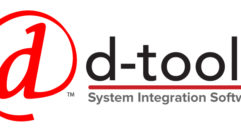Project Management 104: With this basic course, develop (or hone) theskills necessary to managing a sucessful project – from inception tocompletion.
Oct 1, 1997 12:00 PM,
Mark A. Schnell
In today’s competitive marketplace, proper project management is essentialto maintaining the existing customer base and spawning new growthopportunities. This article focuses on proven methods of project managementas well as related areas that could generate additional income potentialfor your company.
Project management can be divided into three main phases -pre-installation, installation and post-installation.
Pre-installation would consist of winning a bid or obtaining the approvalto do an installation. What many contracting and consulting firms overlookis the pro-active approach during this phase. You can wait for the morningmail or for the telephone to ring, or you can create opportunities.Creating opportunities could include calling potential clients or doingfollow-up calls to existing clients. A method that has worked well for manycompanies is to offer a free demo of a hot product in which you think theclient may be interested. This keeps the lines of communication open andoffers both sides the opportunity to interact.
In the area of bid proposals, it is vital that you maintain a current andaccurate database of product pricing and availability so that the bidproposal can be generated in a timely fashion. Another overlooked area isresearch, which includes being aware of current technology trends and beingable to discuss them with clients. Research also concerns itself with beingaware of clients in your area and what is happening in their companies.This information can be obtained directly, for example, with telephonecalls or indirectly by reviewing local newspapers that may have companyannouncements of expansions or executive promotions. As with manyprofessions, networking is vital to operating a healthy contracting orconsulting business.
Once you have been awarded a bid or job contract, the installation phasebegins. The first item that must be addressed is meeting the clients needs.The bid outline may have contained a general overview of the work to bedone. It is time to obtain specifics. The best method for this is aface-to-face meeting with the client. If the job is on a small scale, thismeeting should be sufficient to gather the information you need to planyour next move. However, if the job is a large-scale project that involvesother trades, such as construction or consultants, it is a wise move tosuggest a meeting of all involved.
Once exact information is gathered on the project details, the next stepwould be the formulation of a project time line. This is a linear documentthat graphically details the day-by-day events of the project. Work goalsare listed by trade, and deadlines are set. This schedule is developed andfollowed by all parties.
The best person to develop, generate and maintain the project timeline is adedicated project manager. This person is responsible for overseeing theentire project until it is signed off by the client. Many organizationshave departments that coordinate installations at a facility. If this isthe case, someone from this department should act as project manager. Inthe case of new construction, the project manager could be the generalcontractor or site manager. Every situation is different, but it isimperative that a project manager exist.
The next step in the project timeline would be the ordering of equipmentand installation materials. In general, a 2 to 3 week lead time is requiredto obtain the project elements (A-V equipment, racks, wire). In some cases,this period may need to be longer, such as when you are orderingspecialized projection screens, video or data projectors. Once again, everyproject is a bit different.
In the perfect scenario, all equipment and installation materials should bereceived at least a week before the installation date. This buffer allowstime to bench check all components for proper operation and obtain areplacement if a defective unit is received. This extra time can also beused for prewiring equipment racks in the case of large installations.
During the time prior to the actual on-site installation process, systemdesign drawings need to be generated (if not already done so in the bidprocess). Also, if there are any changes that need to be made, the projectmanager should be notified. The project manager will relay information toother people involved in the project. At this point, a word of caution -save everything! Paperwork, memos, or anything else related to the projectshould be saved in a common place. In the case of a small project, that canbe a file folder; larger projects will require binders. It is also vitalthat this information be accessible to all that need it in your company.People do get sick or have emergencies that take them away from the job.Plan for this occurrence now. It is an uncomfortable situation when theclient or a vendor calls with a question or concern and your informationsource is at home, sick in bed.
If all goes as planned, at this point you have an active project. A projectmanager has been assigned and is coordinating efforts among the variouscontractors. A project timeline has been generated, and you know when youare scheduled to do your part of the project. All of the equipment andinstallation materials have been ordered, received, checked and pronouncedready to go. The next step is the actual on-site installation of equipment.
It goes without saying that the installation crew should arrive promptly atthe job site. If the installation is large, it may be a time saver topre-load delivery trucks the night before. Generate a checklist of allequipment, materials and tools; as you load the truck, check off that item.This will guarantee that your crew is ready to go to work upon arrival atthe job site.
If the installation is scheduled over a period of several days or weeks,the crew should follow the specific project elements that need to becompleted, as detailed on the project timeline, on a day by day basis. If asituation should occur that has the potential to disrupt this schedule, theproject manager should be notified immediately. It is always good practiceto verify conduit runs and electrical needs prior to the on-siteinstallation process. In general, the majority of any new construction workshould have been completed prior to installation of audio and video systems.
After all installation items have been completed, the project will enterits final phase of post-installation. This phase of the project willconcern itself with the following items:
Punch list: No matter how good a plan looks on paper, there will always beminor adjustments. This could be locating a piece of equipment in adifferent location within an equipment rack so users can access thecontrols better, or following up on any items that may have failed duringthe installation and test phase. If an item falls outside of the originalproject design and involves adding components or structural details, itshould be deemed not within the scope of the original project criteria anddiscussed with the client.
Documentation: Precise documentation of the project must be kept. Thisinvolves such details as systems design drawings and wiring numbers andpathways. A copy of this documentation package should be given to theclient upon the end of the project. The client may have its own in-housetechnical staff, who will need this information to upgrade and maintain thenew system. If the client does not have this internal support, this wouldbe an excellent opportunity to offer your company’s services in the form ofa service contract.
User training: As part of any project, small or large, user training shouldbe provided. The time you invest in training users on new equipment will besaved many times over by the reduced number of telephone calls you mayreceive in the future. Depending on the complexity of the project, you maywant to consider contracting out this duty to individuals who specialize inthat area (such as software training).
Final walk-through: After any punch list items have been addressed and thesystem has been thoroughly tested, it is time to do the final walk-throughwith the client. Most contractors use the original contract as a checklistas they cover the items installed. It is usually helpful to have the leadengineer who worked on the project on hand to answer any questions that theclient may have.
Effective project management plays a vital role in today’s sound and videocontracting arena. There are dozens of project management software titlesavailable, or you can create you own on a smaller scale to fit youroperation. I have found it handy to keep any project documentation on 3.5inch computer disks with the ability to print out a hard copy when needed.In today’s e-mail world, this makes even more sense. I have also found thatusing color paper to generate change orders has proven effective. It workswell for movie scripts; why not project details?
Any project is a team effort and is only as good as the weakest link. Byusing the guidelines in this article, your company will be able tocoordinate and execute multiple projects with ease.










